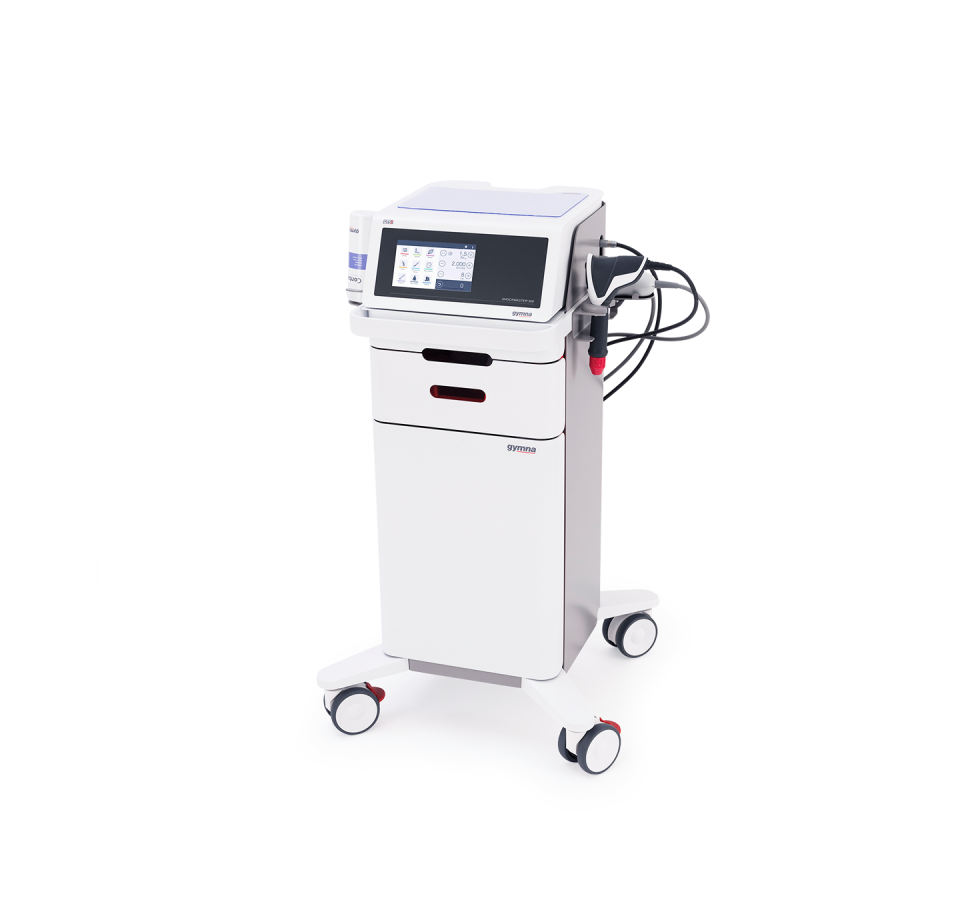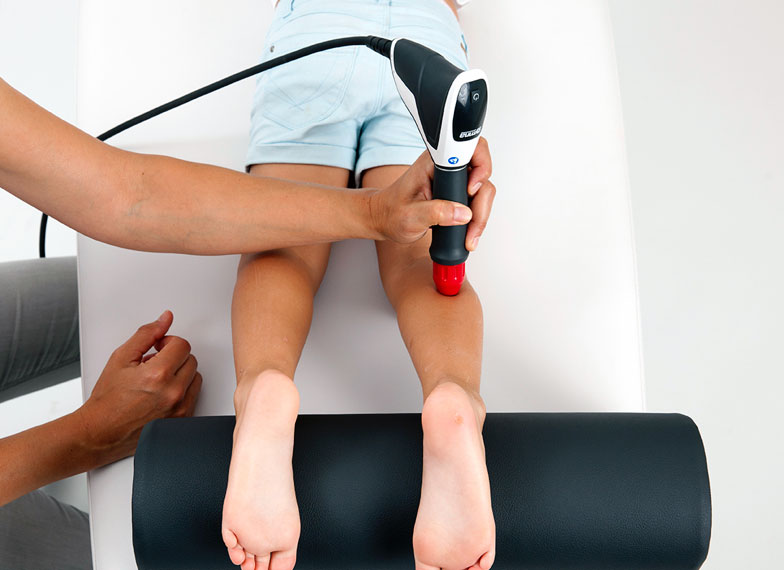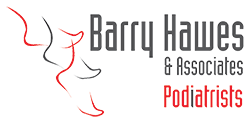Radial Shockwave Therapy
Radial Shockwave Therapy (rESWT) is a relatively new treatment modality used to treat chronic musculoskeletal pain.
We are committed to providing evidence-based podiatric care, which is why we have invested in Radial Shockwave Therapy (rESWT).
We are using the Gymna Shockmaster 500, a state-of-the-art shockwave machine.
Shockwave therapy is recommended for resistant soft tissue injuries that do not respond to conservative treatment (ice, heat, stretching, strengthening, massage, supportive footwear, orthotics etc). Chronic or recalcitrant plantar fasciitis (heel pain) and Achilles tendon pain have the best level of evidence for this treatment and are the conditions most commonly treated with shockwave therapy in podiatry.
What is Radial Shockwave Therapy (rESWT)
Extracorporeal Radial Shockwave Therapy is a series of high-energy percussions to the affected area. The shockwave is a physical sound wave “shock,” not an electric one. This form of treatment was developed from other medical indications (treating kidney stones). There are numerous published scientific studies, which you are free to examine, the majority of which demonstrate positive outcomes. Most importantly, it has been demonstrated as a safe treatment option.
How does it work?
Radial shockwaves are high energy sound waves transmitted from a probe held against and passing through the skin and spreading outwards into the underlying tissues. This is believed to induce increased blood flow and metabolic activity around the site of pain, enhancing the inflammatory process and accelerating healing. At the very least it effectively reduces pain in the area.
Why should I have shockwave therapy?
The treatment should help reduce your pain so you can go back to your normal activities. It will also help you carry out your exercises and rehabilitation more easily.
What are the risks?
Complications do not normally happen with shockwave therapy. It is very low risk but like all treatments/procedures, it may not always be successful. It can cause short-term increased pain and sensitivity, which normally gets better in the shortness of time.
What happens during shockwave treatment?
After a simple examination of the affected area, shockwaves are applied using a handpiece or applicator held against the skin. The initial phase of treatment may cause some deep pain, however, this indicates correct targeting of the problem area. This is usually followed by some numbness  or heaviness in the area and the latter phase of the treatment may feel less painful. The treatment sessions are of around 10 minutes’ duration, during which you may receive up to 3800 “shocks”. Many patients get pain relief in just 8-10 days after the first treatment. Depending on the condition and your response you may require from 1 to 5 treatments, although the average is around 3 treatments.
or heaviness in the area and the latter phase of the treatment may feel less painful. The treatment sessions are of around 10 minutes’ duration, during which you may receive up to 3800 “shocks”. Many patients get pain relief in just 8-10 days after the first treatment. Depending on the condition and your response you may require from 1 to 5 treatments, although the average is around 3 treatments.
After the treatment
You may feel some soreness which can intensify on the night of treatment. Simple analgesia and icing may be required to control this pain. There may also be some minor bruising in the treatment area. You should rest from aggravating activities for 2-3 days after treatment and your treating clinician will discuss this with you. rESWT is most effective when it is utilised in conjunction with your existing rehabilitation program/s, which may include stretching and strengthening, rest/activity modification and supportive footwear and orthoses.
Side-effects
• Post-treatment pain (see above);
• Local bruising – uncommon and will be minor;
• Tendon rupture has not been reported following radial shockwave therapy, unlike cortisone injection and/or surgery.
Contraindications
Please inform your treating clinician if you have any of the following contraindications as this form of treatment may not be appropriate for you:
• Pregnancy
• Bleeding and blood coagulation disorders, or if you are taking associated blood thinning medication;
• Osteoporosis;
• Skin wound/s or acute inflammation in the proposed treatment area;
• Cancer/tumour in treatment area.
